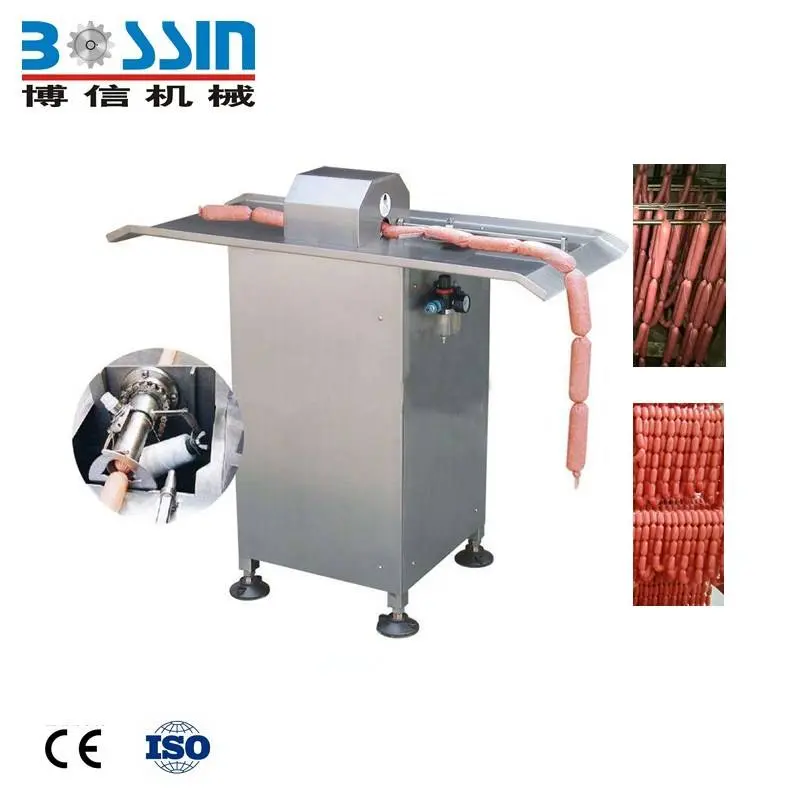
Oktoba . 18, 2024 15:34 Back to list
Efficient Automated Sausage Manufacturing System for Enhanced Production and Quality Control
The Rise of Automatic Sausage Production Lines A Modern Revolution in Food Processing
In the world of food processing, efficiency, consistency, and hygiene are paramount, particularly in the production of meat products like sausages. The advent of automatic sausage production lines marks a significant evolution in how these beloved staples are made, enhancing production capabilities while ensuring high-quality standards are met. This article explores the workings, benefits, and future prospects of automatic sausage production lines.
Understanding Automatic Sausage Production Lines
An automatic sausage production line integrates various technologies and machinery to streamline the manufacturing process. It typically involves several stages meat preparation, mixing, stuffing, linking, and packaging. Each stage is designed to work in harmony, minimizing human intervention and, therefore, reducing the risk of contamination and errors.
The process begins with the selection of high-quality meat, which is then ground and mixed with various spices and additives. Automated mixers ensure that the flavor profile is consistent across batches. After mixing, the sausage material is deposited into casings using advanced stuffing machines. These machines are often equipped with sensors that monitor filling levels and casing integrity, ensuring minimal waste and optimal quality.
Next, linking machines tie off individual sausages with precision, maintaining uniform size and weight. The final steps include cooking, smoking, or refrigeration, depending on the desired type of sausage. Automated packaging systems then seal the product in tamper-proof packaging, ready for distribution.
The Benefits of Automation
The benefits of automatic sausage production lines are manifold. First and foremost, they significantly increase production efficiency. With the ability to produce large quantities of sausages in a fraction of the time it would take manually, manufacturers can meet growing consumer demand with ease.
automatic sausage production line

Moreover, the consistency achieved through automation ensures that each product meets the same high standards for taste and texture. This uniformity is crucial for building brand reliability in a competitive market. Additionally, automatic systems enhance food safety by reducing the amount of human handling, which decreases the risk of contamination—a vital factor in maintaining public health standards.
Another major advantage is the economic aspect. Although the initial investment in automated machinery can be substantial, the long-term savings in labor costs and increased production rates often justify the expense. With automation, manufacturers can allocate human resources to more skilled tasks, such as quality control and innovation.
Challenges and Future Trends
Despite its many advantages, the shift towards automation is not without its challenges. Small and medium-sized enterprises (SMEs) may struggle with the capital required to invest in these systems. Furthermore, there is a learning curve involved in operating advanced machinery, necessitating training and a skilled workforce.
Looking forward, the sausage production industry is poised for further technological advancements. Integrating artificial intelligence (AI) and the Internet of Things (IoT) can optimize production processes even more. For example, predictive maintenance powered by AI can reduce downtime by anticipating machinery failures before they happen.
Sustainability is another critical trend shaping the future of sausage production. Consumers are increasingly concerned with the environmental impact of their food choices. Manufacturers are responding by incorporating more sustainable practices in their production lines, such as reducing waste and exploring alternative protein sources.
Conclusion
Automatic sausage production lines represent a transformative shift in the food processing industry. By enhancing efficiency, ensuring product consistency, and improving food safety, these systems not only meet the demands of today’s market but also set the stage for future innovations. As technology continues to evolve, so too will the ways in which we produce food, paving the way for a more productive and sustainable industry.
Latest news
-
Pneumatic Clipping Machine- Shijiazhuang Bossin Machinery|Sausage Production Line, Food Processing Machinery
NewsAug.05,2025
-
Pneumatic Clipping Machine-Shijiazhuang Bossin Machinery|Precision, Efficiency, Durability
NewsAug.05,2025
-
Pneumatic Clipping Machine-Shijiazhuang Bossin Machinery|Precision Sausage Production&Efficient Clipping Technology
NewsAug.05,2025
-
Pneumatic Clipping Machine: Sausage Production Efficiency & Advanced Tech | Shijiazhuang Bossin Machinery Equipment Co., Ltd.
NewsAug.05,2025
-
Servo Motor Sausage Cutter Spare Parts | Precision Components
NewsAug.05,2025
-
Premounted Side Disc for Efficient Operation - AI-Enhanced
NewsAug.04,2025